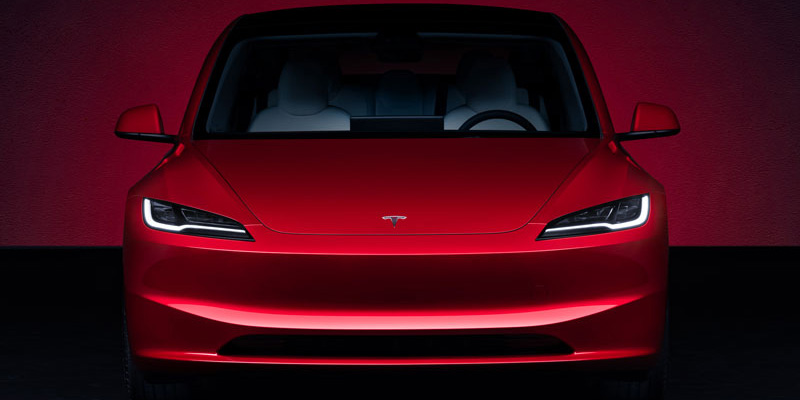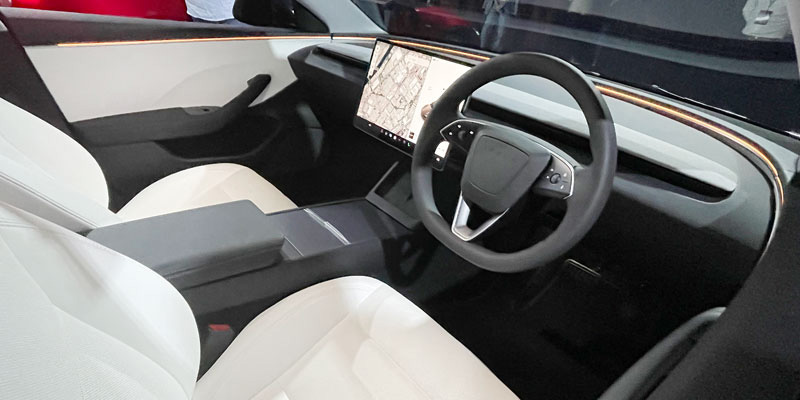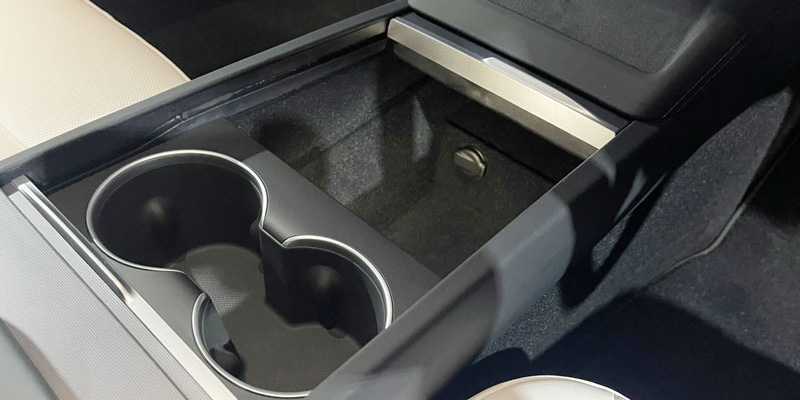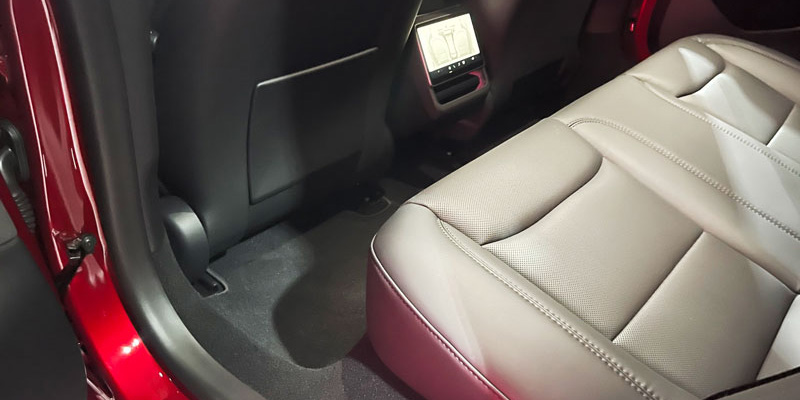

This website uses cookies to improve the user experience. We use cookies in accordance with our NRMA Group Cookie Policy.
This website uses cookies to improve the user experience. We use cookies in accordance with our NRMA Group Cookie Policy.


Launched in Australia in 2019, the Tesla Model 3 has led the local EV market by a long shot until the introduction of its SUV stablemate, the Model Y.
The new update promises a new presence on the road for the Model 3, which is now a common sight after overtaking the Toyota Camry in 2022 Australian new car sales charts.
Daniel Ho, director of vehicle programs at Tesla presented the vehicle at an invite-only event, saying the changes were made to “build on the strengths of the original car,” but also to respond to global feedback.
The most noticeable change in the new reworked Model 3 is around nose styling and headlights.
While the redesigned cowl (the plastic part below the hood) jumps out at first glance, there are also subtler changes that improve both efficiency and noise.
Ho added Tesla reprofiled the trailing edge of the hood to reduce the buffeting, “that the original Model 3 had, which is a source of wind noise."
The changes have resulted in a drag co-efficient of 0.219 down from the previous 0.23, says Ho.
Tesla has also tackled road noise by employing acoustic glass in all windows and doors to achieve a 30 per cent reduction in ambient noise levels. More wrapped interior surfaces also help to dampen sound: “It's like that feeling of turning on the active noise cancellation on your headphones,” Ho says.
Adjustments to the headlamps and fender also aim to optimise airflow, reducing noise levels and improving aerodynamics. The rear end also now features an updated diffuser and a single tail lamp design for simpler manufacturability.
Another benefit due to these changes has been a 5-6 per cent improvement in range.

The front and rear doors have been reinforced to provide enhanced protection in side-impact scenarios, aligning with "very aggressive” new side crash protocols of US-based Insurance Institute for Highway Safety.
“It's equivalent to doubling of the impact energy of a side crash,” said Ho.
Front door catches that insert into slots on the step-through hold the door in place, and the doors also feel heavier to close.
Ho said Tesla has ruled out the introduction of Child Presence Detection features for now in answer to questions about ANCAP’s stricter 2024 safety criteria but intends to introduce future features through software updates.
Ho says Tesla has enhanced body stiffness, allowing the installation of all-new bushings throughout the vehicle.
This along with new suspension components to improve steering capabilities, new shock absorbers and more soundproofing also add up to an improved driving experience on the road, says Ho.
Specially designed 18 and 19-inch tyres with new tyre compounds have resulted in a drop in top speed (but not acceleration) - but for a good reason, said Ho. The new tyres offer, among other things, improved comfort and reduced noise, and both should result in a better ride for passengers.

Stepping inside the updated Model 3 reveals more improvements aimed at enhancing comfort and personalisation. “It’s basically all new,” said Ho.
The instrument screen has been completely revamped: a brighter and more responsive centre display has a larger active area with a thinner bezel. The previous wooden dash has been replaced with a customisable wing.

The door trims now include an ambient lighting system, and in a win for the kids (or the young at heart in the back seat,) an 8-inch rear display allows access to Netflix, YouTube, Disney, Twitch. Rear seat comfort and air conditioning controls are also accessible through this new screen.

Tesla’s “airwave” air conditioning system has also seen an upgrade, and vents have been replaced with airwave in the second row.
Additionally, the centre console now has a dual slider that covers both the storage area as well as the cup holders.

Ventilation has been added to enhance overall seating comfort, and perforated seats in both front and back help passively cool passengers. The back seats have also been redesigned to improve posture.
For audiophiles, Ho says Tesla has “doubled down” on the updated Model 3’s audio system.
There are now 17 speakers – three extra - and new front-end amplifiers with new software resulting in a more noticeable difference between left and right.
"Bass is tighter and punchier and the immersive feature now is even better,” he adds.

An updated Telematics Control Unit (TCU) consolidates connectivity functions into a single integrated module, promising improved cellular performance, signal quality, and Wi-Fi connectivity.
The telephony experience also reportedly has reduced background noise and improved microphone positioning for clearer calls. Ultra Wide Band (UWB) technology enhances positioning accuracy, making phone key operation more reliable (note, this needs a smartphone with UWB capability also.)
There is just one USB-C port instead of three in the front row, while the two USB-C ports in the back row have been given a power upgrade so that two Macbook Pros can charge simultaneously.
Departing from the unorthodox yoke-style steering wheel of the Model S Plaid, the updated Model 3 opts for a conventional round steering wheel.
“The preference is more towards round wheel and so we just bypassed it on this car,” said Ho.
However, controversially Tesla has also removed blinker stalks. Instead, drivers must press buttons on the steering wheel. At the very least, confusion about which side of the steering wheel the blinkers are on will be put to rest.

For those wondering, there is a new Performance Model 3 on the roadmap for Australia. What form it will take though Tesla is keeping under wraps for now – Ho simply said it will be “something very special” and that Tesla has “left a few things on the table.“
Drivers can see the new Tesla Model 3 at showrooms in NSW, ACT, VIC, QLD, ACT and SA from this Saturday.